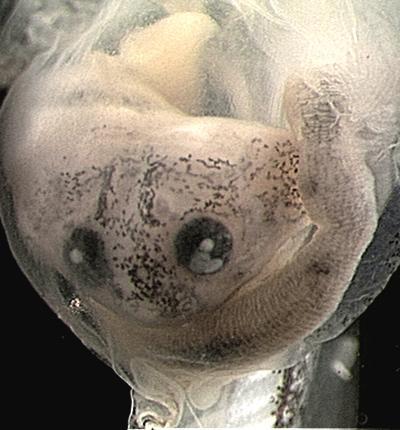The African clawed frog (Xenopus laevis) and Budgett's frog (Lepidobatrachus laevis) differ in diet and last shared a common ancestor about 110 million years ago but what they were found to have in common could help researchers on the path to prevention of intestinal birth defects.
Like most tadpoles, Xenopus exist primarily on a diet of algae, and their long, simple digestive tracts are not able to process insects or proteins until they become adult frogs. Budgett's is an aggressive species of frog which is carnivorous – and cannibalistic – in the tadpole stage.
The researchers knew that Budgett's tadpoles had evolved shorter, more complex guts to digest protein much earlier in their development so they exposed Xenopus embryos to molecules that inactivated a variety of genes to see if any might coax Xenopus to develop a more carnivore-like digestive tract.
Five molecules caused Xenopus tadpoles to develop guts that were closer in appearance to those of the Budgett's tadpoles. Taking it one step further, they exposed Budgett's frog embryos to molecules with opposite effects, and got tadpole guts that were closer to those of Xenopus.

A Budgett's tadpole being digested inside the stomach of a larger Budgett's frog. Credit: NC State University
"Essentially, these molecules are allowing us to tease apart the processes that play a key role in gut development," said North Carolina State University
developmental biologist Nanette Nascone-Yoder
in their statement. "Understanding how and why the gut develops different shapes and lengths to adapt to different diets and environments during evolution gives us insight into what types of processes can be altered in the context of human birth defects, another scenario in which the gut also changes its shape and function."
The researchers' next steps include finding out whether the changes in these gut tubes were merely cosmetic, or if they also function (digest) differently.
Published in Evolution and Development.


